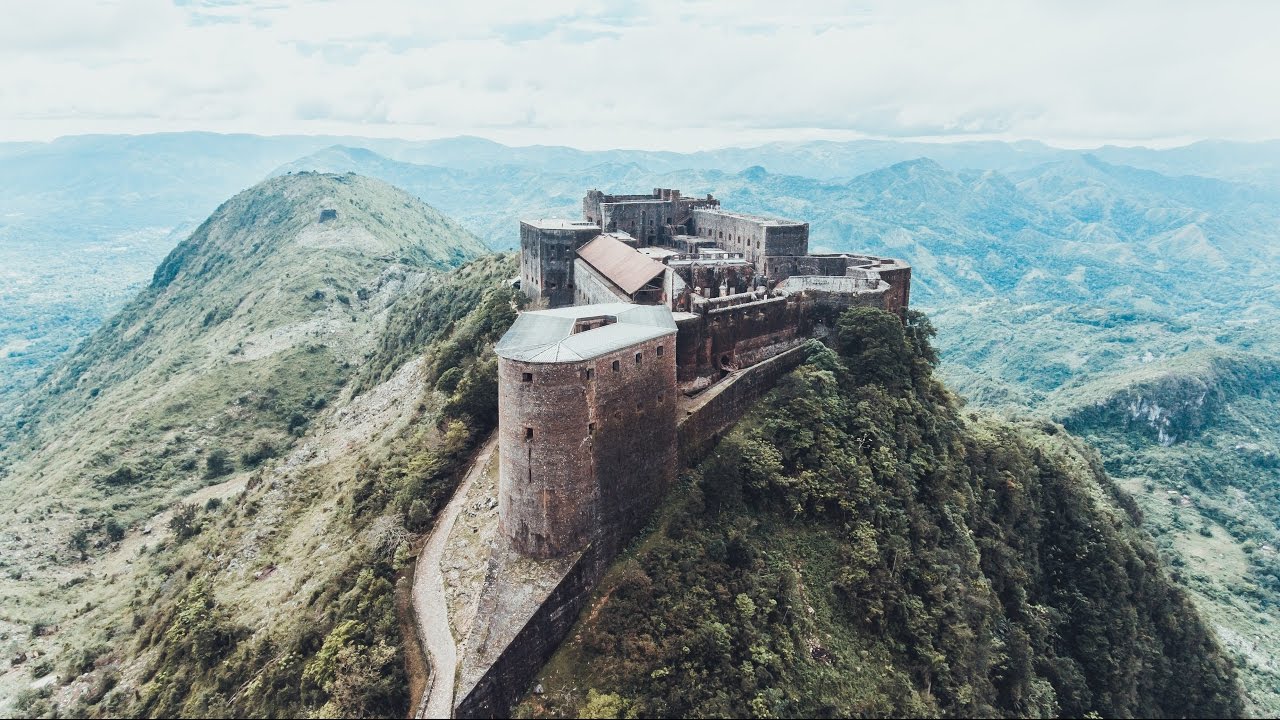
Haiti, a vibrant and culturally rich country located in the Caribbean, is a captivating destination that offers an abundance of natural beauty, historical significance, and a resilient spirit. With a tumultuous past and ongoing challenges, Haiti continues to capture the interest and curiosity of travelers from around the world. From stunning beaches to lush mountains, from rich Afro-Caribbean culture to a history marked by revolution, Haiti has much to offer beyond its headlines. In this article, we will delve into 32 fascinating facts about Haiti, shedding light on its unique features, remarkable history, and the undeniable spirit of its people. So, let’s embark on a journey to uncover the beauty, resilience, and cultural tapestry of this extraordinary Caribbean nation.
Key Takeaways:
- Haiti is the first independent nation in Latin America and the Caribbean, known for its vibrant art, rich culture, and stunning natural wonders. It’s a resilient nation with a strong sense of community and cultural pride.
- With its unique blend of African and French culture, Haiti offers a vibrant art scene, delicious cuisine, and captivating folklore. From its historic landmarks to its stunning landscapes, Haiti invites you to embrace its rich heritage and be part of its story.
Haiti is the first independent nation of Latin America and the Caribbean.
In 1804, Haiti became the first country in the region to gain independence from colonial rule, marking a significant milestone in the fight against slavery and oppression.
It shares the island of Hispaniola with the Dominican Republic.
The island of Hispaniola is divided between two countries, with Haiti occupying the western portion and the Dominican Republic on the eastern side.
The official languages of Haiti are Haitian Creole and French.
Haitian Creole, a unique blend of African languages and French, is widely spoken throughout the country. French is predominantly used in official, educational, and business settings.
Haiti is renowned for its vibrant art scene.
Haitian art is characterized by vibrant colors, intricate designs, and storytelling themes. The country’s artists have gained international recognition for their talent and creativity.
The Citadel Laferrière is a UNESCO World Heritage Site.
Sitting atop a mountaintop near the city of Cap-Haïtien, the Citadel Laferrière is a majestic fortress built in the early 19th century. It is the largest fortress in the Americas and offers breathtaking views of the surrounding landscape.
Voodoo is an integral part of Haitian culture.
Voodoo, a syncretic religion combining elements of African beliefs with Catholicism, plays a significant role in the daily lives and traditions of many Haitians.
Haiti is home to stunning natural wonders.
From the turquoise waters of Labadee to the majestic waterfalls at Bassin-Bleu and Saut-Mathurine, Haiti boasts a diverse range of natural attractions that captivate visitors.
The Haitian Carnival is one of the largest and most vibrant in the Caribbean.
Every year, Haiti comes alive with music, dance, and elaborate costumes during the Carnival season. It is a vibrant celebration of the country’s culture, history, and resilience.
Mount Pic la Selle is the highest peak in Haiti.
Standing at approximately 8,793 feet (2,680 meters) above sea level, Mount Pic la Selle offers breathtaking views and is a popular destination for hikers and nature enthusiasts.
Haiti is known for its delicious cuisine.
Traditional Haitian dishes such as griot (fried pork), diri ak djon djon (rice with black mushrooms), and akra (malanga fritters) are beloved by locals and visitors alike.
The Citadelle Henry is a symbol of Haiti’s defiant spirit.
Perched atop a mountain near Milot, the Citadelle Henry is a formidable fortress built to defend Haiti against potential French invasions during the 19th century. Its construction showcases the determination and resourcefulness of the Haitian people.
Haiti is vulnerable to natural disasters.
Being in a region prone to hurricanes and earthquakes, Haiti has faced several devastating natural disasters throughout its history.
The national flower of Haiti is the hibiscus.
The vibrant and tropical hibiscus flower is a symbol of beauty and resilience in Haitian culture.
The blue and red colors on the Haitian flag represent the African and European heritage of the country.
The flag’s blue symbolizes the African ancestry, while the red represents the bloodshed during the fight for independence.
Haiti has a unique form of dance called “kompa.”
Kompa is a popular genre of music and dance in Haiti, known for its infectious rhythms and energetic movements.
The National Palace in Port-au-Prince is an iconic symbol of Haitian history.
Although it was severely damaged during the 2010 earthquake, the National Palace remains a powerful symbol of Haiti’s rich cultural heritage.
Haiti has a diverse ecosystem with lush rainforests and stunning coastal areas.
The country’s natural beauty is showcased in its rainforests, mangroves, and the stunning turquoise waters of the Caribbean Sea.
Haiti has produced many influential writers and poets.
Renowned authors such as Jacques Roumain, Marie Vieux-Chauvet, and Dany Laferrière have shaped Haitian literature and contributed to the global literary scene.
Haiti has a rich tradition of oral storytelling.
Through oral traditions, Haitians pass down their history, myths, and cultural heritage from one generation to the next.
Jean-Jacques Dessalines, one of Haiti’s founding fathers, declared himself Emperor.
After leading the successful slave revolution, Dessalines became the first ruler of independent Haiti and declared himself Emperor Jacques I.
The national tree of Haiti is the mahogany tree.
Mahogany trees are not only revered for their beauty but also for their durability and use in furniture and construction.
Haiti is known for its vibrant music scene.
From traditional Haitian folk music to the globally recognized “mizik rasin” (roots music), Haiti’s music is a reflection of its history, culture, and resilience.
The Sans-Souci Palace is a UNESCO World Heritage Site.
Once the royal residence of King Henri Christophe, this grand palace showcases the architectural brilliance of the Haitian people.
Haiti has a growing eco-tourism industry.
With its beautiful beaches, stunning waterfalls, and diverse marine life, Haiti offers unique eco-tourism experiences to visitors.
The National Museum of Haiti houses a significant collection of Haitian art and historical artifacts.
Located in Port-au-Prince, the museum provides a glimpse into Haiti’s history, art, and cultural heritage.
The average life expectancy in Haiti is around 64 years.
Several factors, including poverty, access to healthcare, and environmental challenges, have influenced the country’s life expectancy.
Haiti is the most mountainous country in the Caribbean.
Its stunning mountain ranges and lush valleys contribute to its breathtaking landscapes.
Haitian folklore features a range of mythical creatures and spirits.
From the mischievous “lougawou” to the protective “lwa,” Haitian folklore is filled with captivating tales of supernatural beings.
The Tap-Tap buses are a colorful and iconic mode of transportation in Haiti.
These brightly painted buses, adorned with artistic designs and phrases, reflect the vibrancy and creativity of the Haitian people.
Haiti has a national soccer team.
The Haitian national soccer team, known as Les Grenadiers, represents the country in international competitions and showcases Haiti’s passion for the sport.
The Cathedral of Our Lady of the Assumption is a historic landmark in Port-au-Prince.
Before it was severely damaged in the 2010 earthquake, the cathedral was a significant religious and cultural symbol in Haiti.
Haiti is a resilient nation with a strong sense of community and cultural pride.
Despite facing numerous challenges throughout its history, Haiti continues to inspire through its unwavering spirit and determination to thrive.
Discovering the 32 facts about Haiti highlights the rich heritage, natural beauty, and vibrant culture of this Caribbean nation. From its historic landmarks to its mouthwatering cuisine and captivating art scene, Haiti offers a blend of experiences that captivate the hearts of those who visit. Whether exploring its pristine beaches, delving into its folklore, or immersing oneself in its music and dance, Haiti invites you to embrace its uniqueness and be part of its story.
Conclusion
In conclusion, Haiti is a country with a rich and vibrant culture, a turbulent history, and a resilient population. From its picturesque landscapes to its delicious cuisine and passionate music, Haiti has much to offer to visitors and is a truly unique destination. Despite the challenges it faces, Haiti continues to strive for positive change, with a focus on social development, education, and environmental sustainability.
If you are planning a trip to Haiti, make sure to explore its stunning beaches, historic landmarks, and vibrant markets. Engage with the local communities, learn about their customs and traditions, and support the local economy. Whether you are interested in history, adventure, or simply soaking in the beauty of this Caribbean gem, Haiti will leave you with unforgettable memories.
With its fascinating facts and captivating beauty, Haiti is truly a country worth discovering.
FAQs
1. Is Haiti a safe country to visit?
Haiti has experienced political instability and natural disasters in the past, leading to safety concerns. However, like any other travel destination, it’s important to stay informed and take necessary precautions. It is advisable to check travel advisories and seek advice from local authorities or your embassy before traveling to Haiti.
2. What is the best time to visit Haiti?
The best time to visit Haiti is during the dry season, which runs from November to March. During this period, the weather is pleasant, and you can enjoy outdoor activities and explore the country without any interruption from heavy rains.
3. What is the official language of Haiti?
The official language of Haiti is Creole, a unique and expressive language derived from French. French is also widely spoken and understood, especially in urban areas and among educated populations.
4. Can I drink tap water in Haiti?
No, it is not recommended to drink tap water in Haiti. It is advisable to drink bottled water or use water purification methods to ensure your safety and well-being during your visit.
5. What are some must-visit attractions in Haiti?
In Haiti, some must-visit attractions include the UNESCO-listed Citadelle Laferrière, the vibrant streets of Port-au-Prince, the beautiful beaches of Jacmel, and the stunning waterfalls of Bassin Bleu. Additionally, exploring the enchanting art and music scene in Haiti is highly recommended.
Haiti's rich history, vibrant culture, and stunning landscapes make it a truly captivating nation. From being the first independent Caribbean country to its unique art scene and delicious cuisine, Haiti offers endless fascinating facts waiting to be explored. If you're eager to learn more about this incredible country, why not delve into some eye-opening Haiti facts that will leave you amazed? Or perhaps you'd like to uncover surprising truths about Haitian culture and traditions. And for those intrigued by Haiti's political history, discovering mindblowing facts about Jean Bertrand Aristide is sure to satisfy your curiosity.
Was this page helpful?
Our commitment to delivering trustworthy and engaging content is at the heart of what we do. Each fact on our site is contributed by real users like you, bringing a wealth of diverse insights and information. To ensure the highest standards of accuracy and reliability, our dedicated editors meticulously review each submission. This process guarantees that the facts we share are not only fascinating but also credible. Trust in our commitment to quality and authenticity as you explore and learn with us.


